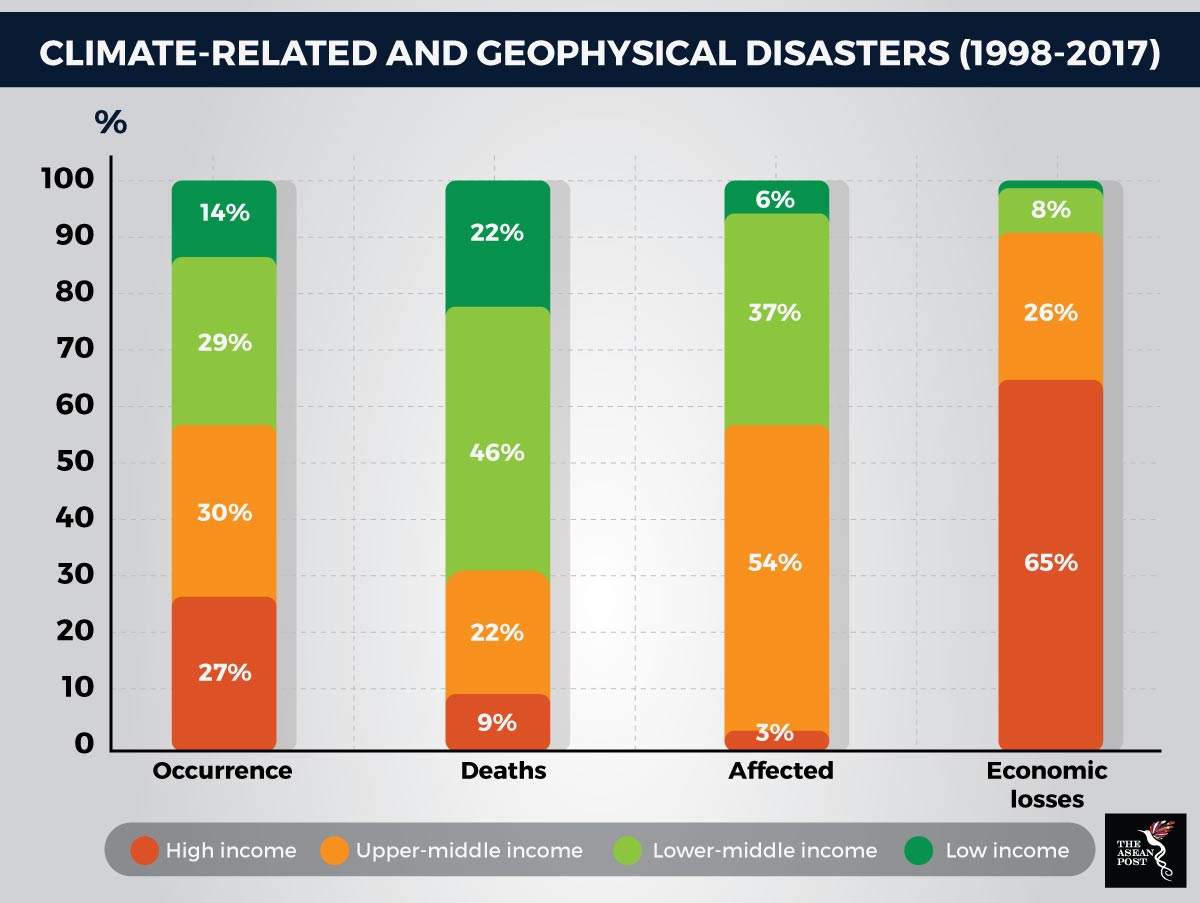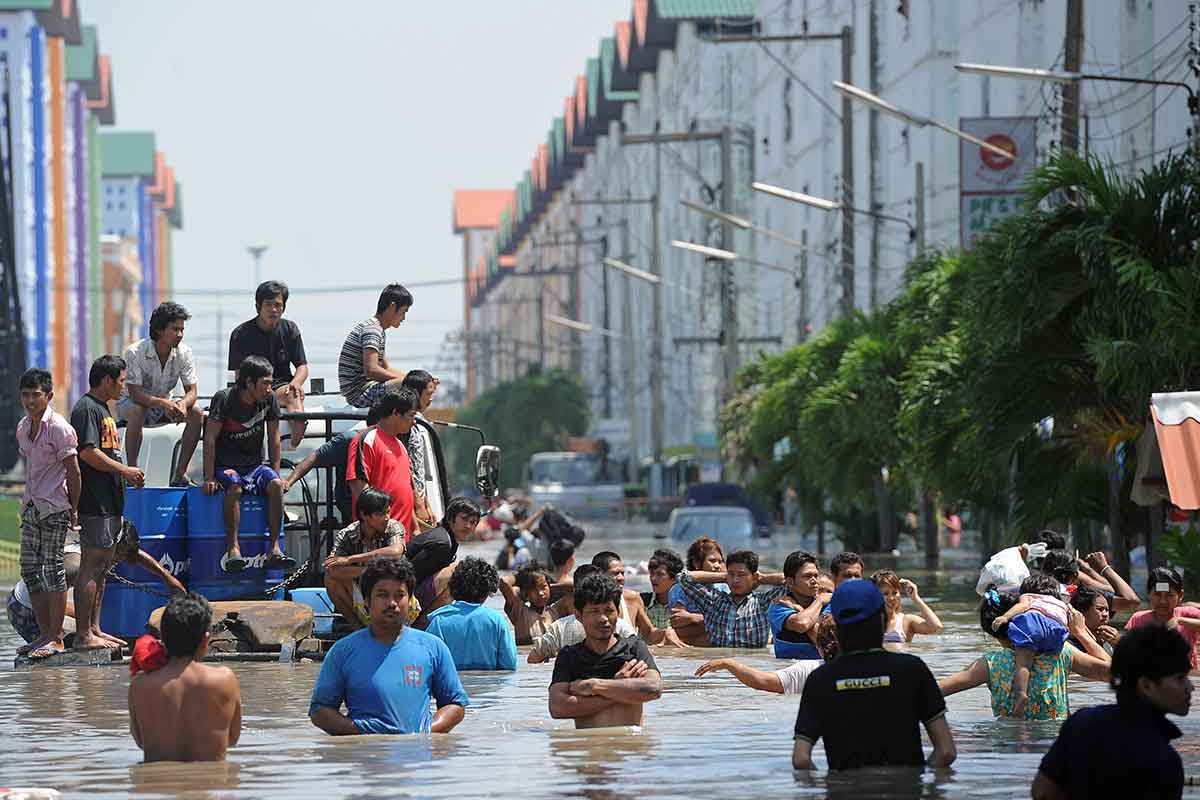Thailand’s Great Flood of 2011 which took place between July and December affected more than two-thirds of the country. The event, deemed the worst flooding in half a century, affected 65 out of the country’s 77 provinces, killing more than 800 people. It was estimated that 13.6 million lives were affected, with a million of them displaced or left homeless. The economic damages associated with the flooding event were widespread.
The Great Flood was a result of a perfect storm of both, natural and human factors. The La Niña phenomenon early in the monsoon season of 2011 caused a 143 percent increase in rainfall in the northern regions, resulting in record-high soil moisture content, doubling of runoff and reservoirs exceeding their threshold storage levels. Water management requiring smart balancing to cater to storing water for the dry season and minimising flooding during the wet season was affected. The country also received excessive rainfall from five tropical cyclones, namely Haima, Nock-ten, Haitang, Nesat and Nalgea, from June to October, 2011.
The floodwater that caused swollen rivers, broken floodgates and submerged agricultural land travelled southward towards the urban build-up of the greater Bangkok metropolitan area. There, the problem was compounded by the elevated sea level in the Gulf of Thailand and land subsidence. The failure of local planning and development agencies in areas surrounding the industrial parks in Bangkok to prepare for persistent and recurrent flooding sealed the fate of the megacity.
Eighth on the list
The World Bank estimated that the overall economic losses of the Great Flood amounted to THB1.4 trillion (US$45.7 billion), of which THB1 trillion (US$30.5 billion) was borne by the manufacturing sector. The Great Flood of 2011 was the main contributor to seating Thailand eighth on the list of top 10 countries or territories in terms of absolute cumulative losses due to disasters in the two decades between 1998-2017. The top three countries on the list are the United States (US) at US$944.8 billion, followed by China at US$492.2 billion and Japan at US$376.3 billion.
According to the joint publication of The Centre for Research on the Epidemiology of Disasters (CRED) and the United Nations Office for Disaster Risk Reduction (UNISDR) on ‘Economic Losses, Poverty & Disasters’, climate-related disasters dominate the picture over the past 20 years, accounting for 91 percent of all 7,255 recorded events between 1998 and 2017. 43 percent of disasters recorded are flooding events, followed by storms at 28.2 percent.
Flooding also affected the largest number of people, at more than two billion, followed by drought, which affected a further 1.5 billion people. However, the deadliest disasters are earthquakes, killing 747,234 people within the two decades, followed by storms, tropical cyclones and hurricanes, that killed 233,000 people over the same period.
Disproportionate burden of disasters
An estimate by the World Bank puts the real cost of disaster to the global economy at a staggering US$520 billion per annum. However, the economic losses do not represent the whole picture. Where disasters happen, resilience and recovery matters. Awareness, education and governance also matter when it comes to reducing death tolls.
According to the CRED/UNISDR report, lower middle-income and low-income countries are disproportionately burdened by disasters as they recorded only 43 percent of all major disasters but 68 percent of fatalities. High income countries experienced 27 percent of global disasters and only nine percent of deaths. These countries, however, recorded 65 percent of all economic losses. While the loss is high, it still only represents a small percentage of their respective gross domestic products (GDP).
“The US$21 billion in climate-related disaster losses recorded by low income countries amounted to an average of 1.8 percent of gross domestic products (GDP), well above the International Monetary Fund’s (IMF’s) threshold of 0.5 percent for a major economic disaster,” it stated.

Sources: CRED/UNISDR
Every year, disasters push more than 26 million people into poverty. With the advance of climate change, the number of disaster event will increase further, playing an increasing role in driving up losses around the world. Lessons from past disasters, such as the 2011 Great Flood in Thailand is key in building resilience through awareness, education and governance.
Related articles:
Disaster tourism obstructing rescue and relief
